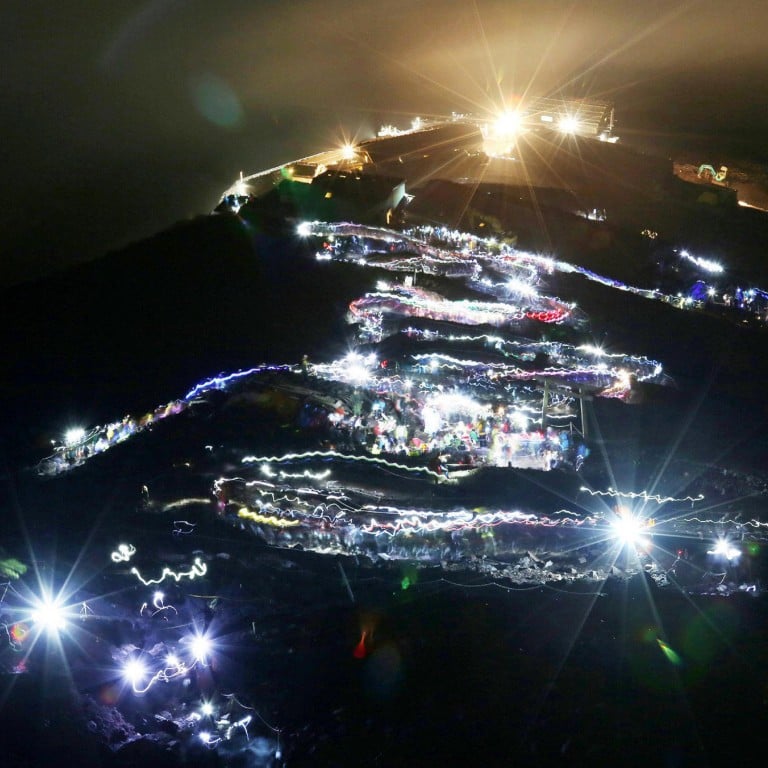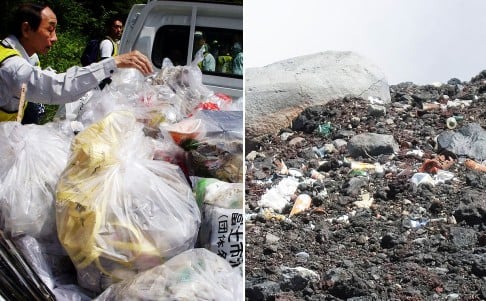
Japan's sacred Mount Fuji risks turning into trash mountain
Famed slopes being defaced by rubbish, graffiti and faeces, putting world heritage status at risk
The slopes of Japan's Mount Fuji are increasingly being defaced by rubbish and graffiti, despite an overall decline in the number of people scaling the peak.
Officials in the prefectures of Shizuoka and Yamanashi, which have jurisdiction over Japan's highest mountain, have reported discovering large heaps of rubbish and human waste on the slopes, a problem that has apparently worsened since Mount Fuji was recognised in June last year as a Unesco World Cultural Heritage site.
Many people have also expressed outrage at the discovery of graffiti on rocks at four locations on the mountain. One word, picked out in red spray paint, read "Indonesia" and prompted the newspaper to run a story headlined "Holy Mountain Attacked."
Elsewhere, plastic drinks bottles, plastic bags, cigarette butts and other debris litter pathways.
Prefectural authorities have made efforts to encourage people to not discard their refuse on the mountain and installed rubbish bins at the rest stations that dot the zig-zag paths to the top of the 3,776-metre peak.

"We estimate that there has been a reduction of as much as 20 per cent from a few years ago because of the introduction of the park-and-ride system at the foot of the mountain," said Nikki Aoki, a spokeswoman for the Fuji-san Club, a group dedicated to preserving the mountain's natural environment.
"It used to cost a car full of people Y2,000 to drive up to the fifth station, where hikers start walking.
"But now they have to park at the bottom, pay the parking fee and take the shuttle bus to the fifth station and then pay the voluntary fee. That means it costs ¥16,000 to climb Mount Fuji instead of just ¥2,000."
Fewer people has not lead to less waste, however, with national broadcaster NHK reporting that the situation was so bad that the national government was compiling a report into the situation and drawing up measures to clean up the rubbish.
Under the terms of the Unesco heritage designation, the government provided a commitment to meet the strict regulations on preserving the mountain's flora, fauna, environment and scenery.
Unesco will carry out a new inspection of the mountain and its facilities in February 2016 and can, if it is not completely satisfied, revoke the heritage status.

